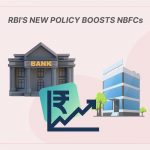The U.S. banking system is once again at the center of debate as regulators prepare to implement new rules in autumn 2025. These changes will allow banks to classify troubled loans differently—potentially masking financial stress. While regulators see it as part of a broader deregulatory effort, critics warn that it could obscure early warning signals of instability in the financial system.
In this article, we break down what the rule change means, why it matters, and how it could impact borrowers, investors, and the U.S. economy.
What Are Troubled Loans?
Troubled loans—often called troubled debt restructurings (TDRs)—are loans where borrowers are unable to meet original repayment terms. Typically, banks must modify such loans to avoid defaults, making them indicators of financial stress in both consumer and corporate sectors.
Traditionally, once a loan was flagged as troubled, it carried that label permanently. This transparency helped regulators, investors, and analysts assess risks in the banking system.
The New Rule: What Changes in 2025
Under the new reporting framework, banks will no longer be required to permanently identify loans as troubled. Instead, they can classify them based on whether modifications occurred within the past 12 months.
Key highlights of the new rule include:
- Temporary Classification – A loan will only be reported as troubled if it was modified in the last year.
- Flexibility for Banks – Loans that return to normal payment schedules may no longer carry the troubled label.
- Deregulatory Approach – This rule is part of a broader trend to reduce reporting burdens on financial institutions.
Why Regulators Support the Change
Regulators argue that the new framework reflects the dynamic nature of loan performance. They claim it provides a more realistic view of borrowers who recover after financial hardship.
- Reduced Compliance Costs for banks.
- Encouragement of Loan Modifications, making banks more willing to work with struggling borrowers.
- Alignment with Accounting Standards that focus on forward-looking credit losses instead of permanent classifications.
Why Critics Are Concerned
Critics fear the new rules could make it harder to detect financial stress within banks. By allowing troubled loans to “disappear” after 12 months, the system may paint an overly optimistic picture of bank balance sheets.
Major concerns include:
- Transparency Loss – Investors and regulators may miss early warning signs.
- Higher Financial Risks – Masking troubled loans could create hidden vulnerabilities, similar to pre-2008 crisis issues.
- Potential Impact on Borrowers – Without clear reporting, banks may take more risks in lending, which could backfire in downturns.
The Broader Impact on the U.S. Banking Sector
This rule could reshape how analysts, investors, and rating agencies evaluate U.S. banks. Some possible outcomes include:
- Short-Term Relief for Banks: Loan books may look healthier than they really are.
- Long-Term Risk Exposure: If economic conditions worsen, hidden troubled loans could lead to sudden shocks.
- Investor Caution: Market participants may demand more independent audits and data.
- Borrower Dynamics: Easier loan modifications may benefit borrowers in distress but could also encourage riskier lending practices.
How This Affects the Economy
The U.S. economy relies heavily on transparent financial reporting. When data on troubled loans is obscured, policymakers may struggle to detect systemic risks.
- For Households: Mortgage and credit card holders may see more flexible restructuring options.
- For Businesses: Small and medium enterprises (SMEs) could benefit from modified loan access.
- For Investors: Lack of visibility could impact stock and bond market decisions.
- For Regulators: They may face challenges in maintaining financial stability.
- Historical Context: Lessons from 2008
The 2008 financial crisis taught the world the importance of transparent reporting. Back then, hidden risks in subprime mortgages snowballed into a global recession.
Many experts argue that rolling back reporting standards could repeat past mistakes. Transparency, they say, is the best safeguard against another financial meltdown.
What Borrowers and Investors Should Do
- Borrowers should understand their rights regarding loan modifications.
- Investors must look beyond official reports and track alternative risk indicators.
- Businesses should prepare for both benefits (easier loan terms) and risks (stricter lending later).
- Policy Watchers should monitor how the rule plays out post-implementation in autumn 2025.
Q1. What exactly is changing in bank reporting rules?
Banks will no longer permanently label loans as troubled. Instead, they will only classify them as troubled if modifications happened within the past 12 months.
Q2. Why are regulators making this change?
Regulators aim to reduce compliance costs and encourage banks to restructure loans without fear of long-term penalties.
Q3. How does this affect borrowers?
Borrowers may benefit from banks being more open to modifying loans, giving them breathing space during financial hardship.
Q4. Why are critics worried?
Critics fear that hidden troubled loans could mask systemic risks, creating blind spots for regulators and investors.
Q5. Could this lead to another financial crisis?
While not guaranteed, reduced transparency could increase the chances of financial instability if the economy faces shocks.
Conclusion
The upcoming changes in U.S. bank loan reporting rules mark a significant shift in financial regulation. While they aim to reduce burdens on banks and encourage loan modifications, the potential loss of transparency raises red flags.
As autumn 2025 approaches, borrowers, investors, and regulators will need to carefully monitor how these changes affect the stability of the U.S. financial system.













